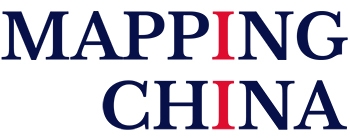by Aya Adachi
While EU is faced with disintegration, China’s role in regional integration has gained momentum. As an overarching projection that could potentially incorporate and coordinate other inter-regional regional as well as sub-regional initiatives, China-led One Belt One Road (OBOR) could emerge as the central cooperation mechanism across Eurasia and includes parts of the African Continent. This OBOR Centrality (Zhao 2016) is already shaping regional integration processes, by utilizing synergy effects arising from other regional initiatives: Chinese diplomats have started to try aligning and incorporating other regional and sub-regional cooperation mechanisms with OBOR.
Although the EU has potential to co-design and shape the dynamics of integration underpinning OBOR, it lacks a comprehensive and effective agenda to engage with the various levels, the mega-regional, regional, sub-regional, and state levels of the initiative. Diverging interests among EU member states have resulted in failure to come up with an unified China-policy. OBOR has received mixed reactions in Europe: one the one hand it is perceived as a geo-economics and geopolitical threat to the EU unity, on the other hand some see opportunities for investments.
The disagreement over how to engage with OBOR could result in long-term consequences, if the EU were to take a half-hearted approach. A comprehensive agenda on how to engage with the OBOR framework is vital to ensure that EU interests are secured and to allow co-designing the new economic corridors. A successful OBOR policy could further stimulate economic growth, highlight the advantages of the Common Market and the EU in general and thereby counteract nationalist uprising.
Furthermore, the EU could benefit from positioning itself as a competent partner in matters of regional integration, which could enhance EU’s normative power in addition to co-shaping OBOR. Despite recent economic, refugee and political crisis, in which EU politics are predominantly driven by internal affairs and concerned with disintegration, EU has long served as the model for regional integration and could provide important lessons from its own positive as well as negative experiences. With a balanced approach, the EU could avert the risk of being resented and perceived as China’s partner in facilitating the mega-regional project by other countries that lack the capacity to position themselves to ensure mutual gains within the OBOR framework. Therefore, it is important to cooperate with various regional mechanisms, countries affiliated to OBOR, as well as China.
Policy Recommendations
The agenda to engage with China-led OBOR should include three complementary components: First, establishing an EU-wide body that exercises oversight over incoming investment akin to US Committee on Foreign Investment will allow pooling of information and increase in transparency of overall investments to EU as well as China’s outbound investment to EU in particular.
Second, active use of EU China Connectivity Platform will allow co-designing the new economic corridors. More specifically, this mechanism could be used to safeguard conformity of OBOR related investments with EU regulations and standards.
Third, the EU should further foster engagement and dialogues related and unrelated to OBOR with OBOR affiliated countries and more importantly other overlapping regional mechanisms. In addition to Asia-Europe Meeting (ASEM) that could be a useful forum to increase cooperation, EU should also improve its support (Herrero Cangas & Gregersen 2016) to other regional initiatives such as ASEAN, CAREC, SASEC, GTI, 16+1 platform between China and Eastern European Countries. In addition, the EU could enhance its normative power by promoting people-to-people dialogues, cooperation among civil society organizations across OBOR.
In conclusion, by applying a three-level framework, EU could form a comprehensive agenda that operationalizes engagement with OBOR centrality, thereby avoiding a China-centred approach by inclusion of other affiliated mechanisms and states.
References
Herrero Cangas & Gregersen 2016 “Prospects for supporting regional integration effectively: An independent analysis of the European Union’s approach to the 11th European Development Fund regional programming“, Discussion Paper 192, ECDPM available at: http://ecdpm.org/publications/prospects-for-supporting-regional-integration-effectively/?utm_content=buffer39c75&utm_medium=social&utm_source=twitter.com&utm_campaign=buffer%3Cbr%20/%3E (last accessed: 28.07.2017)
Zhao Hong 2016 “Can China’s OBOR Initiative Synergize with AEC Blueprint 2025?, ISEAS, Perspective No. 62, Yusof Ishak Institute available, https://www.iseas.edu.sg/images/pdf/ISEAS_Perspective_2016_62.pdf (last accessed: 28.07.2017)
